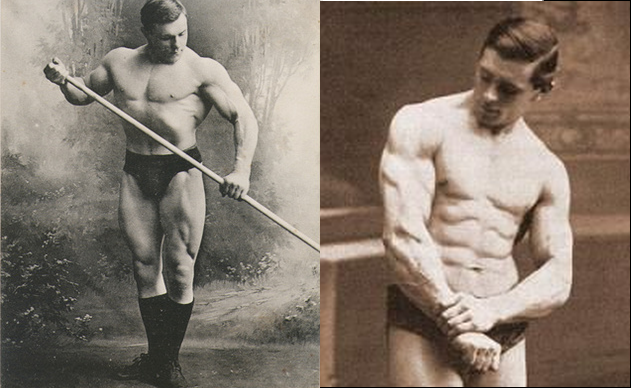What does it mean to be healthy? What are the objective markers that demonstrate a well-functioning metabolism, a hale and hearty organism? The mainstream approach is one obsessed with biomarkers and test results. These can be useful, but are as likely to mislead as help. An imbecilic brand of reductionism has become the norm in the medical world as a result of over-reliance on such tests, which has lead to a loss of understanding what health actually is, what it looks and feels like. Outlined here are the qualities I believe to be most important in assessing the state of one's bodily health, which require no testing and no laboratory to confirm.
These are the physical qualities that reliably track a person who is free of disease and brimming with vitality. These are the qualities that make a person's presence gratifying and pleasant in a primal, animalistic way. It is a blessing to possess them and wisdom to cultivate and protect them as best we can.
Bear in mind always: All of the qualities outlined here are amenable to pronounced positive change given intelligent effort and adequate knowledge of human physiology, nutrition and physical culture.
- Bodily warmth resulting from a sufficiently robust metabolism and healthy blood flow in both the viscera and the peripheral tissues. Not dependent on stress-induced rises in body temperature, and so present during times of relaxation and repose such as sleeping, massage, cuddling, reading, conversing, walking leisurely, etc.–This as opposed to the cold and poorly-blooded extremities of hypothyroid persons or those suffering from similar defects in basal metabolism and blood flow.
- A neutral or pleasant body and breath odor in the absence of powerfully scented cosmetic products such as soaps, perfume, deodorant, toothpaste, etc. This assumes fairly routine bathing habits with the use of minimally scented or non-scented cleaning products, or naught but water and simple compounds like baking soda or unscented bar soap.
- Even-toned, elastic, smooth, taut, soft, resilient, minimally blemished skin over all or most of the body.—This as opposed to muddled tone, dry, rough, fragile, heavily blemished, deeply wrinkled, excessively oily, varicose-veined or discolored skin on large portions of the person’s body.
- Clear and boldly colored eyes with a minimum of venous invasion in the whites of the eye, absence of discoloration in the sclera, absence of cataracts, minimal discoloration of skin surrounding the eyes, a lively and perceptive appearance given by surrounding tissue, especially the eyelids.—This as opposed to chronically blood-shot eyes, yellowish discoloration of the sclera, dull and uninteresting color of the iris, chronically drooping or “heavy” eyelids, dark bags or circles under the eyes, presence of cataracts, and abnormal protrusion or retraction of the eyeballs in the eye sockets.
- Robust, broad, and symmetrical development of the bones and teeth.—Contra the malformed bones that result chiefly from inadequate nutrition and misuse during development, the pinched and narrow frames and faces of many semi-malnourished persons, the waif-life appearance of a person with a slight and fragile skeleton even in adulthood, and heavily crowded, widely spaced, undersized or missing teeth.
- Clean and white or whitish teeth that lack any substantial discoloration or structural decay.—This as opposed to yellow, brown, or black discolorations resulting from excessive staining or some form of decay in the teeth, and a noticeable layer of residue or plaque on the teeth themselves.
- Firm pinkish gums that adequately cover the base of the teeth.—Contra receding, reddish and bleeding or pale and bloodless gums that suggest the presence of pathology in the tissue.
- Soft, even-toned, colorful, shapely, pleasantly plump, warm lips.—As opposed to rough, excessively thin, blotchy, pale, swollen or chapped lips.
- Lustrous, strong, shiny, well-hydrated, soft hair (especially on the head).–This as opposed to brittle, dry, dull, frazzled, coarse, rigid hair.
- Sufficient muscle tone, size, and strength to allow an ease and self-sufficiency in physical expression and moderately strenuous tasks. A respectable level of grace, flexibility, control and power in physical execution generally.–As opposed to atrophied muscles, bodily rigidity, and physical weakness that clearly impacts one’s capacity to express oneself bodily and perform tasks like picking up and moving objects, dancing, running, jumping, climbing, having passionate sex, defending oneself, playing with a dog or child, etc.
- Lack of chronic, dysfunctional muscle tension, especially in the muscles of the face.—Contra the perpetually tensed features and frames of stressed people and the attendant emotional and postural consequences thereof, which make them generally less pleasant and more agitating and enervating to associate with.
- Body fat levels consistent with the aforementioned physical prowess and the long-term health of the person. Having a body fat percentage that is neither too high nor too low for the robust and sustainable function of the person’s metabolism and their capacities as an active being.—This contra the unhealthy obesity that has become alarmingly common in the modern world, as well as the extremes of low body fat found in emaciated people, extreme endurance athletes, misguided exercise enthusiasts, professional body builders, and so on.
- A pink, even-toned, lively, minimally furry, gunky or discolored tongue.—Absence of the many varieties of unsightly, malodorous and pathogenic overgrowth on the tongue that can make it variously yellow, white, black, or brown, or the deep red color of a sickly tongue.
- Lack of chronic edema seen in various metabolic disorders. That is, the many common forms of dysfunctional swelling seen in the ankles, hands, feet, knees, and face.
